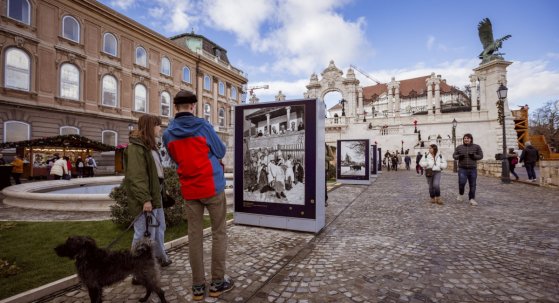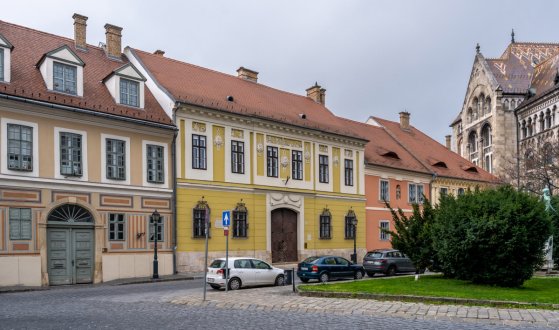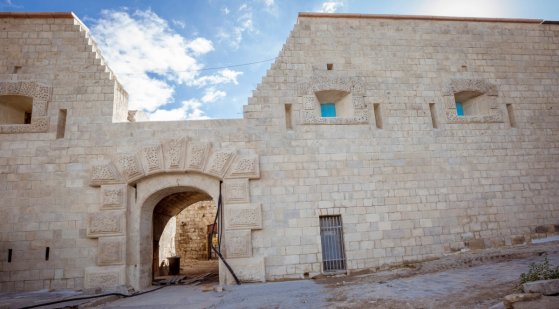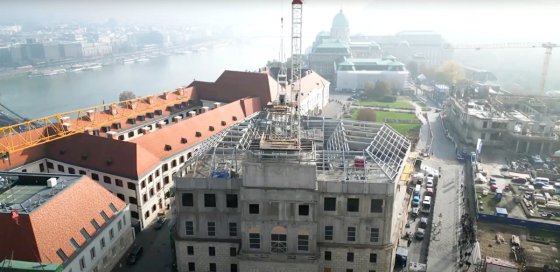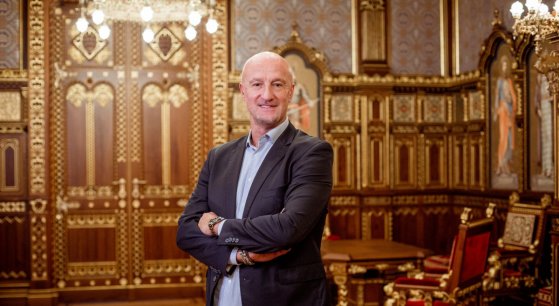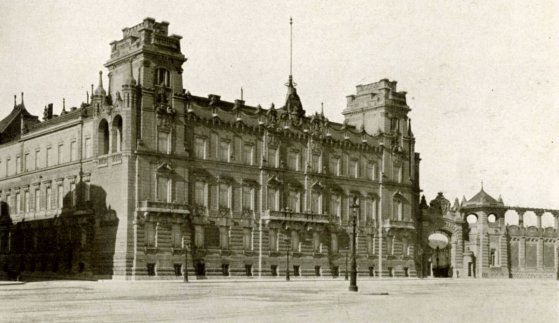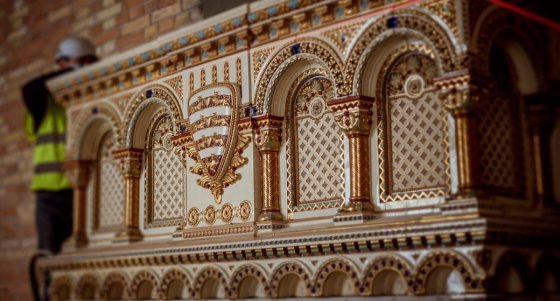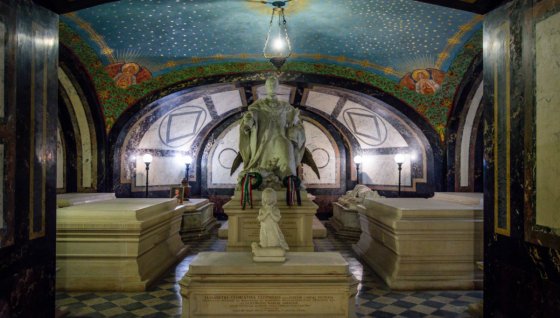 The „intertwined history” of the bridges and the city of Budapest
Which ideas and events have shaped the fate of bridges of Budapest and the cityscape? Alongside many other interesting facts, this question is also answered this newly published book by the Budapest City Archives, which introduces the history of bridges in Budapest.
The „intertwined history” of the bridges and the city of Budapest
Which ideas and events have shaped the fate of bridges of Budapest and the cityscape? Alongside many other interesting facts, this question is also answered this newly published book by the Budapest City Archives, which introduces the history of bridges in Budapest.
Castle Headquarters
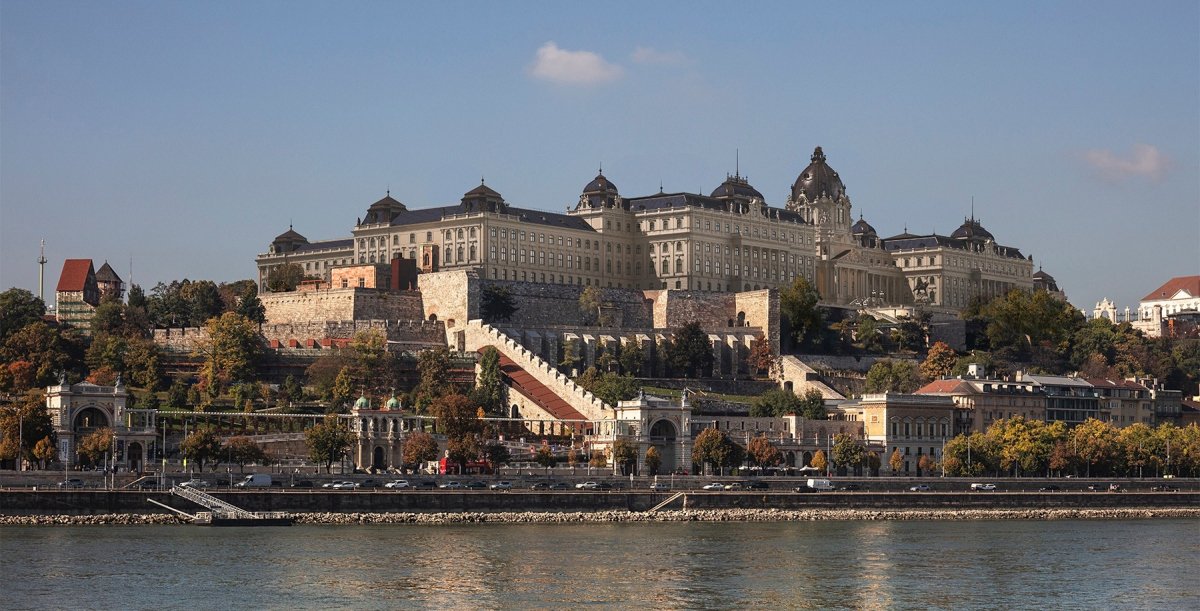 This is what the reborn Buda Castle will look like - From now on, anyone can see the plans
This is what the reborn Buda Castle will look like - From now on, anyone can see the plans
December 20, 2022 at 8:00 PM
The restoration of the Buda Castle has begun, and the visuals for its reconstruction have been published in the past few days, so now we know exactly what the building will look like after the reconstruction is completed. The Neo-Baroque royal palace was built between 1890 and 1905 with a significant expansion of the previous palace, but after 1945 it was rebuilt and simplified due to war damage. Anyone can see the reconstruction plans in the visitor centre that opened on Monday in Hunyadi Court.
Traditions of a vanished world - This is how they prepared for the holiday in the Carpathian Basin
December 6, 2022 at 8:00 PM
The open-air photo exhibition, which opened on 6 December on the Danube-facing terrace of the Buda Castle and in the Castle Garden Bazaar, invites visitors to take a real trip back in time. The old photographs show the Christmas customs of the peoples of the Carpathian Basin, now unknown to many, leading the visitors to a vanished world, to the time of their great-grandparents.
A walk through time - The houses in the Buda Castle tell the story of nearly 800 years of Jewish history
December 3, 2022 at 10:00 AM
Although the history of Budapest's Jews is as old as the city itself, it is less well-known how many places we can find memories of the community and how many houses preserve stories from the Middle Ages to the 21st century. The tour guide of the Buda Castle Walks of the Castle Headquarters has now provided an insight into this during the Shalom, Buda! castle walk to Pestbuda.
The Citadel will be renewed: the former military fortress' walls are being breached
November 28, 2022 at 2:00 PM
For decades, unworthy conditions prevailed at the top of Gellért Hill, in the vicinity of the Citadel, but last spring, after the archaeological excavations, the renovation and transformation of the former military fortress began. Now follows the breaching of the fortress walls in accordance with the design renders, as well as the design of the roundel according to the new functions and the necessary structural construction work.
The Headquarters of the Hungarian Defence Forces has reached its highest point
November 10, 2022 at 6:30 PM
The Dísz Square building of the former Hungarian Defence Forces Headquarters (or High Command), which is under reconstruction, has reached its highest point, and the structure of the dome has already been placed on top. On this occasion, following the traditions, a topping-out ceremony was held. The tree together with the steel frame of the roof lantern adorning the dome was raised to the roof of the palace in front of the guests invited to the ceremony.
Marco Rossi in the St. Stephen's Hall
November 4, 2022 at 6:30 PM
Since its opening in August 2021, more than 100,000 people have already visited St. Stephen's Hall and the related exhibition. Marco Rossi, the captain of the Hungarian national football team, was the 100,324th visitor.
Archaeologists also found a silver denarius of King Matthias during the reconstruction of Archduke Joseph's palace
October 13, 2022 at 2:00 PM
During the construction of the reborn Archduke Joseph's palace on Buda Castle's Szent György Square, the archaeological excavation brought several special features to the surface: the specialists found an almost intact copper jug from the Turkish era, a silver denarius of King Matthias, and valuable ceramic and glass materials. They also found the passage that led to a cellar created from a natural rock cave. The room was probably used in the Middle Ages.
Zsolnay fireplace in Saint Stephen's Hall now being built
April 14, 2021 at 12:30 PM
The largest Zsolnay fireplace in the country, weighing nearly one and a half tons, is now being built in the Saint Stephen's Hall of the Royal Palace of Buda Castle. Hungarian artisans, including representatives of disappearing crafts, took part in the re-creation of the 611-piece ceramic fireplace. The historical hall will be open to the public on August 20.
The most Hungarian Habsburg rests in Buda Castle – A visit to the Palatine Crypt
November 14, 2020 at 9:00 AM
A lesser-known segment of the vast Royal Palace of Buda Castle has housed the final resting place of the Palatine-branch of the House of Habsburg since the Hungarian National Awakening and the Reform Period. The crypt of the Habsburg palatines has remained almost unchanged since the 19h century. Few know that a Habsburg was buried in the crypt in the 2010s. Pestbuda visited the stunning site as part of a tour organised by the National Hauszmann Program before the restrictions announced on 10 November, limiting events entered into force. Join us on a visit to the crypt of the Royal Palace of Buda Castle.
More articles
 The „intertwined history” of the bridges and the city of Budapest
Which ideas and events have shaped the fate of bridges of Budapest and the cityscape? Alongside many other interesting facts, this question is also answered this newly published book by the Budapest City Archives, which introduces the history of bridges in Budapest.
The „intertwined history” of the bridges and the city of Budapest
Which ideas and events have shaped the fate of bridges of Budapest and the cityscape? Alongside many other interesting facts, this question is also answered this newly published book by the Budapest City Archives, which introduces the history of bridges in Budapest.
 The Bridge Report, which brought a turning point in the history of Budapest
A travel report that changed the history of Pest and Buda, as well as Hungary. The little book contributed to the change of half a thousand years of legal customs and the implementation of an investment of unprecedented size and technical quality. This book was The Bridge Report [Hídjelentés in Hungarian].
The Bridge Report, which brought a turning point in the history of Budapest
A travel report that changed the history of Pest and Buda, as well as Hungary. The little book contributed to the change of half a thousand years of legal customs and the implementation of an investment of unprecedented size and technical quality. This book was The Bridge Report [Hídjelentés in Hungarian].
 Drama on the university wall - The heroic monument was planned 95 years ago
In the constant hustle and bustle of the Egyetem Square in Pest, the students may not even notice the monument that decorates the short section of wall between the church and the central building of ELTE. However, it commemorates their predecessors, the heroes who fought for their country in World War I, and those who heroically helped them. The first design of the dramatically collapsing soldier was born in 1928, ninety-five years ago.
Drama on the university wall - The heroic monument was planned 95 years ago
In the constant hustle and bustle of the Egyetem Square in Pest, the students may not even notice the monument that decorates the short section of wall between the church and the central building of ELTE. However, it commemorates their predecessors, the heroes who fought for their country in World War I, and those who heroically helped them. The first design of the dramatically collapsing soldier was born in 1928, ninety-five years ago.

